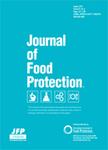版权所有:内蒙古大学图书馆 技术提供:维普资讯• 智图
内蒙古自治区呼和浩特市赛罕区大学西街235号 邮编: 010021

作者机构:Calif Dept Hlth Serv Microbial Dis Lab Berkeley CA 94704 USA
出 版 物:《JOURNAL OF FOOD PROTECTION》 (食品保护杂志)
年 卷 期:1999年第62卷第6期
页 面:662-664页
核心收录:
学科分类:0832[工学-食品科学与工程(可授工学、农学学位)] 08[工学] 0836[工学-生物工程]
主 题:英属哥伦比亚/流行病学 培养基 疾病暴发流行 免疫酶技术 紫苜蓿/微生物学 紫苜蓿/生理学 俄勒冈/流行病学 沙门菌属/分离和提纯 沙门菌食物中毒/流行病学 沙门菌食物中毒/微生物学 种子/微生物学 种子/生理学 人类
摘 要:Naturally contaminated alfalfa seeds, epidemiologically linked to foodborne disease outbreaks in Oregon and British Columbia, were tested for the presence of Salmonella. Ten sample units from the suspected lot were sprouted and grown for 4 days. After enrichment of the grown sprouts, an enzyme immunoassay (EIA) and culture method (modified procedure of the Food and Drug Administration Bacteriological Analytical Manual) were used for the detection and isolation of Salmonella. Four of the 10 sample units were positive with the ELA;however, 5 of the 10 sample units were culture positive (four were positive for Salmonella serotype Newport and a fifth was positive for Salmonella serotype Albany and serotype Schwarzengrund). The positive alfalfa seed sample units were further tested after shredding, soaking, and washing before culturing. Results suggest that sprouting and shredding methods may yield greater detection and recovery rates of Salmonella, but more research with a larger sample size is warranted.